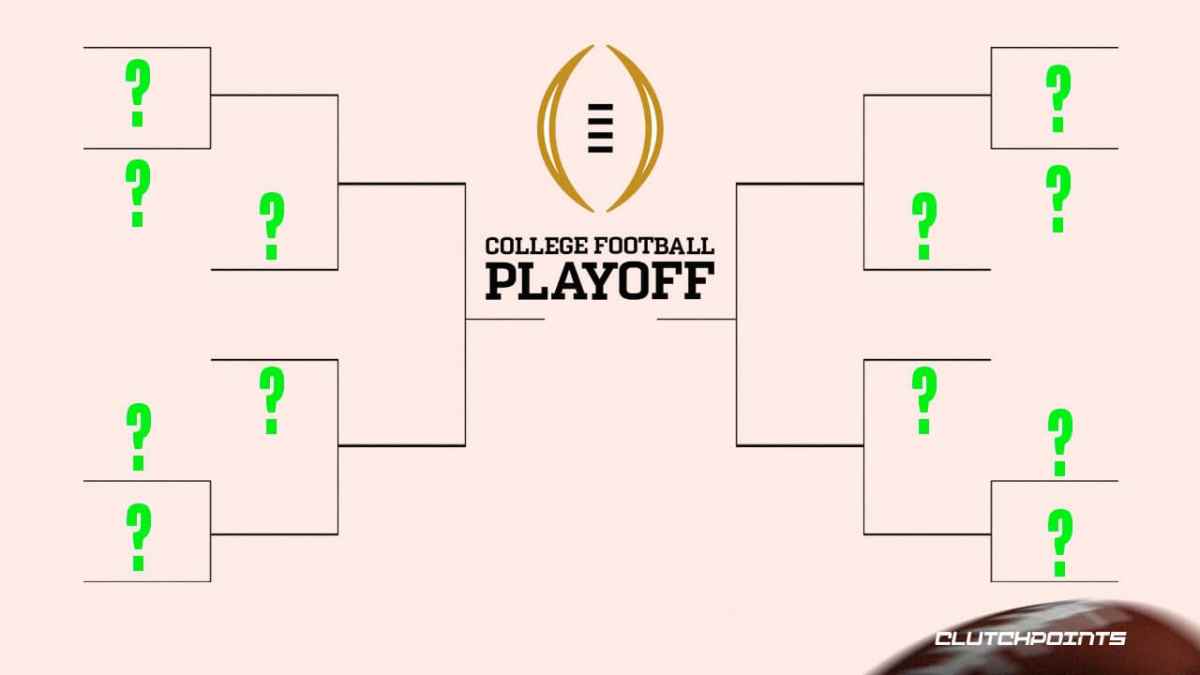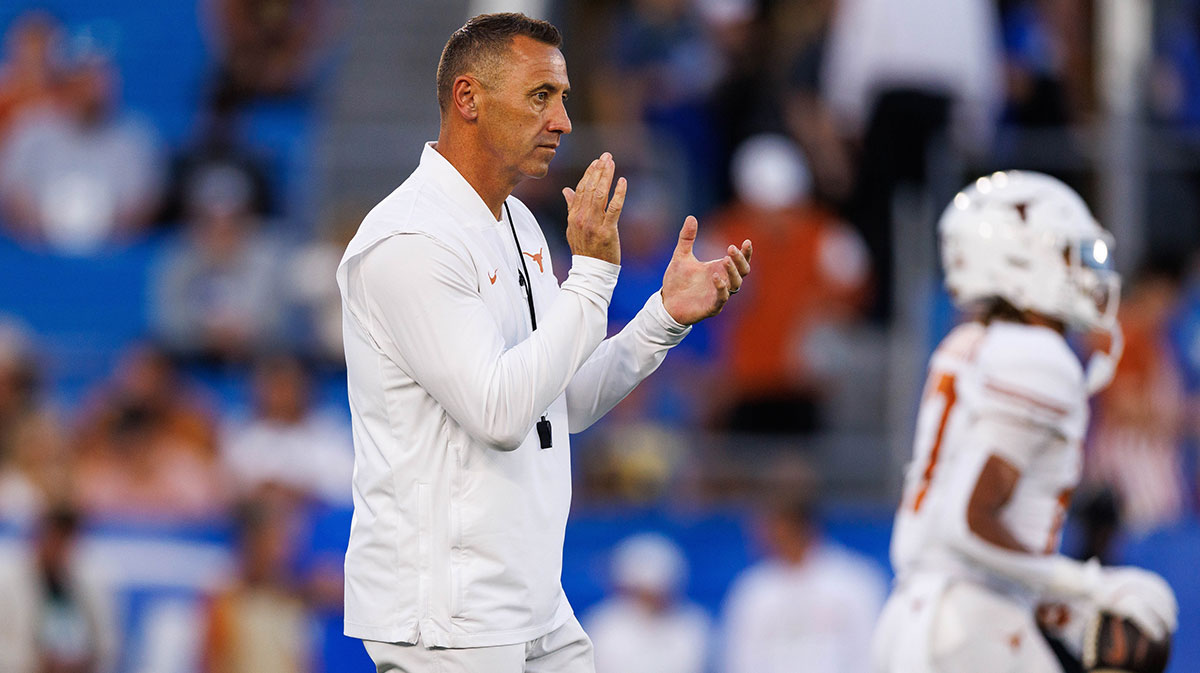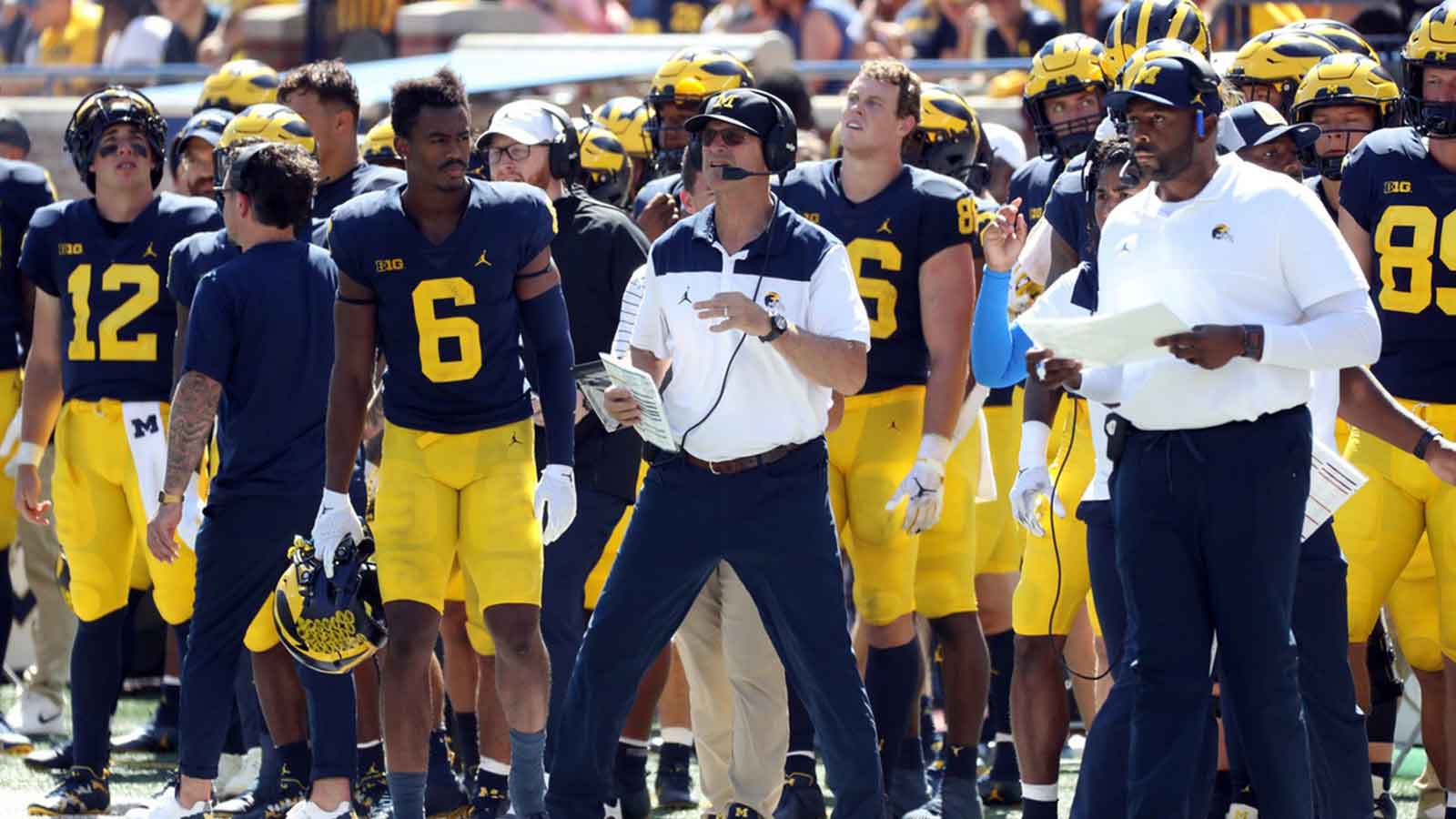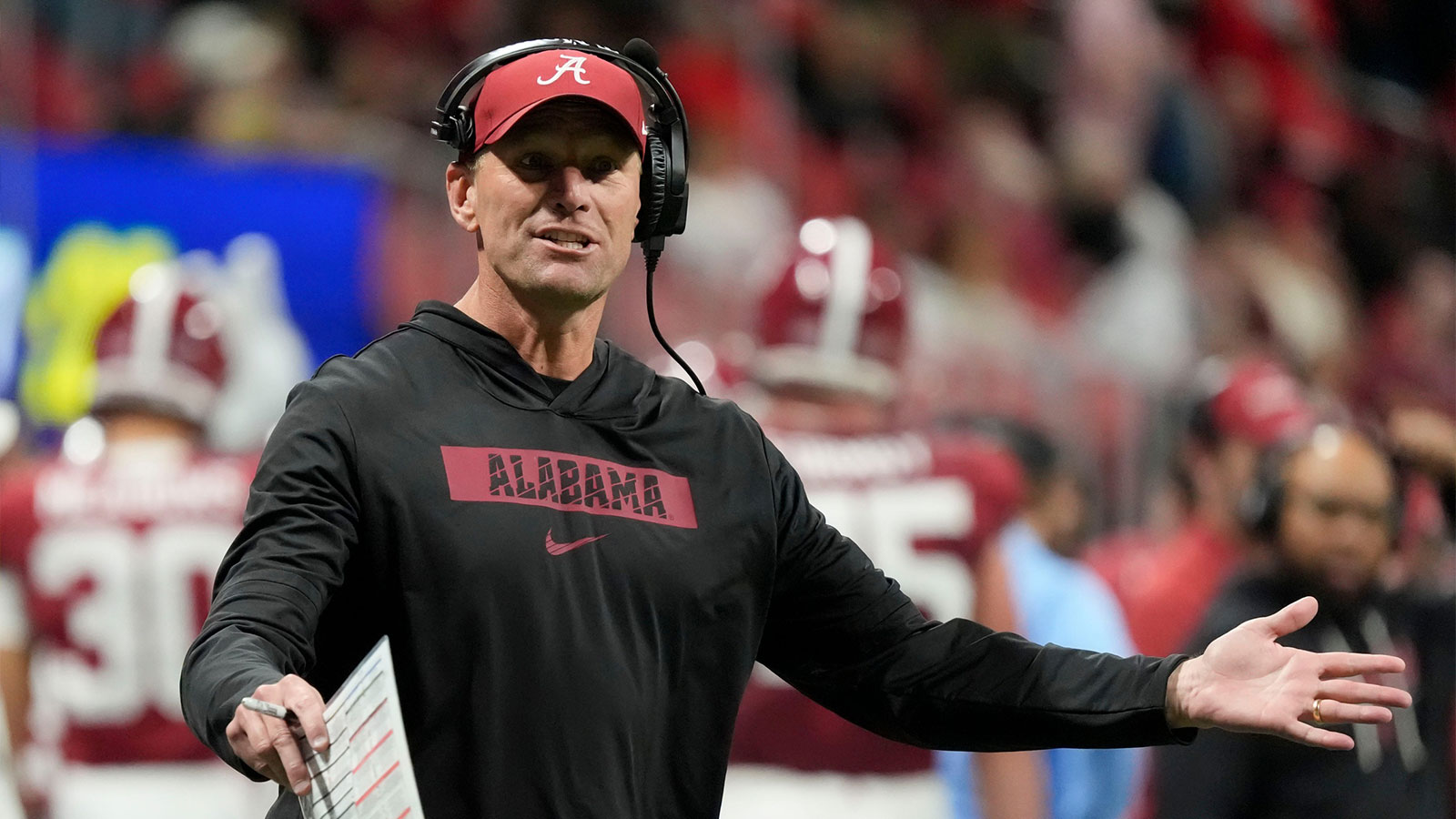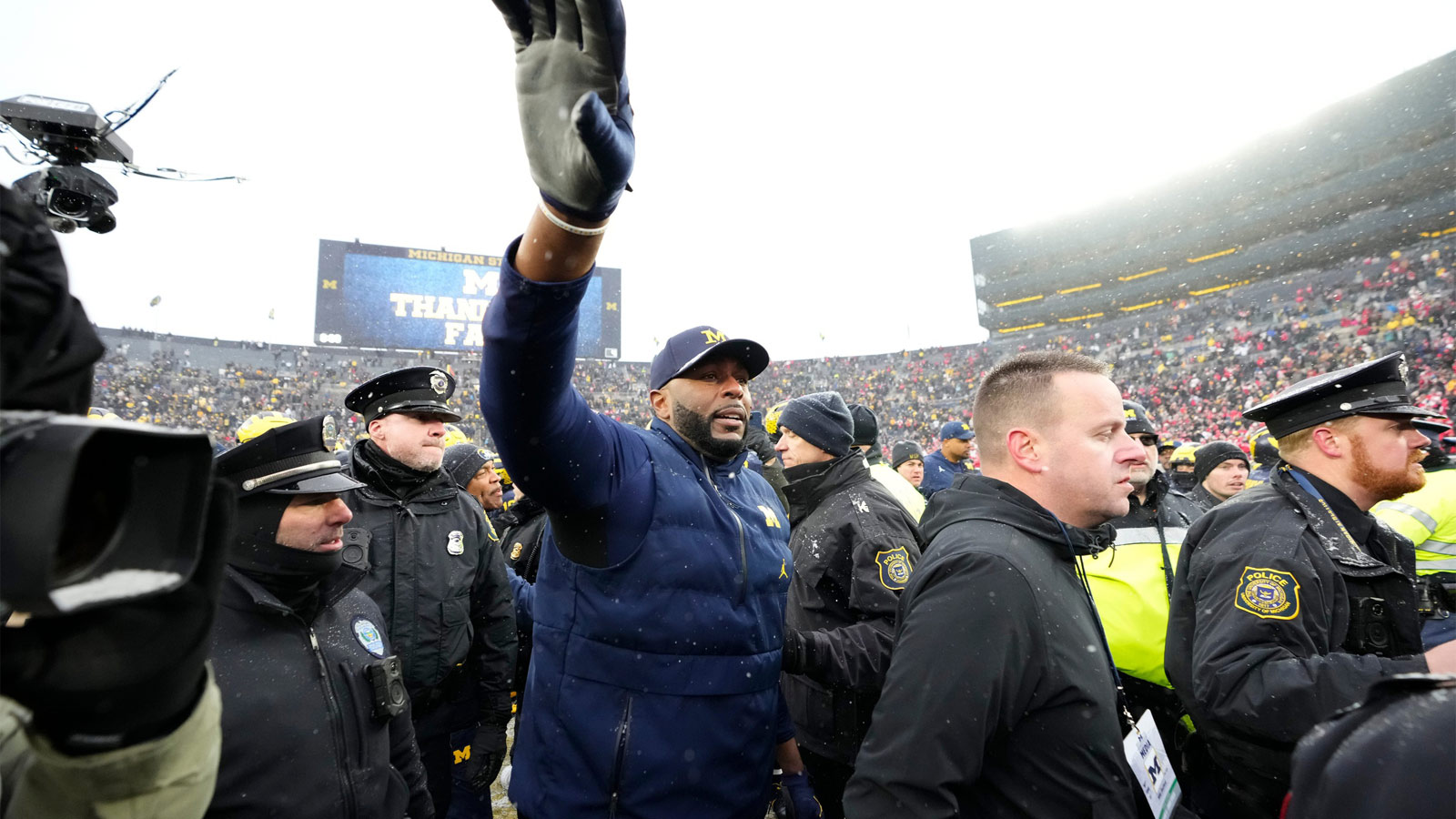We're just mere weeks away from the beginning of the 2023 college football season, yet most are now looking well into the future, to 2024, as the landscape of the sport will take on a completely new dynamic by then. The Big Ten will for sure be realigned and expanded, now not only adding USC and UCLA as initially thought, but now with Oregon and Washington now. And the Pac-12? Well, it could not only lose its Power-5 conference membership but the league could become completely non-existent.
College football will likely continue to change before 2024
Just a couple years ago, college football fans knew the sport was changing, circling the year 2024. The College Football Playoff is expanding in 2024, with a mixture of chagrin and delight — but no one quite expected the sport as a whole would be changing to the degree it has just a season prior to the new playoff's inception. Now, with 12 teams set to be invited in to next year's playoff model and a multitude of conference realignment, where exactly will those 12 teams be coming from?
The Big 12 is still trying to expand, potentially taking the remnants of what's left of the Pac-12, meanwhile the ACC is still attempting to find ways to make its disgruntled members — who are threatening to find every loophole out of their grant of rights deals with the ACC — happy by bringing in more revenue. And as we've seen, the Big Ten and SEC just keep gobbling up the highest quality cuts. Even with just weeks before the 2023 season, things could change drastically for the 2024 season, much less in a year's time. But let's try to take a look at what a College Football Playoff could look like in 2024.
The one problem with the College Football Playoff 2024
First of all, let's look at the format for the 2024 College Football Playoff, according to collegefootballplayoff.com:
The field of 12 teams will be comprised of the six conference champions ranked highest by the selection committee (no minimum ranking requirement), plus the six highest-ranked other teams. The ranking of the teams will continue to be done by a selection committee whose size, composition, and method of selection will remain substantially unchanged from the current arrangement. The four highest-ranked conference champions will be seeded one through four and each will receive a first-round bye. The other eight teams will play in the first round with the higher seeds hosting the lower seeds either on campus or at other sites designated by the higher-seeded institution.
There's one glaring issue in the first sentence now: six conference champions. The initial thought for having six conference champions was so that there would representation in the CFP, while also nipping in the bud the continuous belief throughout the years of the little guy being left out. But now, who is the little guy? Or better yet, has the little guy got even smaller?
No one quite knows when and how this expansion is going to stop, as these conferences are in a measuring stick war with each other — some that are knowing of it (*cough Big Ten), while others who don't seem to care or acknowledge it (*cough SEC).
The expansion began back in 2011, when conferences like the SEC, ACC, Big Ten, Big 12 and Pac-12, all boosted their conferences up to either 12 or 14 teams. Most believed it would stop there, but as we can all see, that's not the case. The SEC and and Big Ten have stayed ahead of the curve, packing on, adding teams as if they were some sort of Power Rangers Megazord, while the others are looking for scrap metal and used parts, hoping just keep the engine running.
We're now looking at conferences that will consist of somewhere between 16 to maybe even 20 teams.
Redefining parameters for the College Football Playoff in 2024
With it being unknown how exactly the Pac-12 is going to play out from here, either in the form of the dwindled down four teams it is projected to have at this point, or whether it looks to expand or merge with another conference, is important. The balance of power seemingly lies in the hands of the SEC and Big Ten, who initially agreed upon the format of the CFP for 2024. But now, with how drastically things have changed, will they continue to be as content with this model?
The initial agreed upon parameters of the playoff where for when there were the original Power-5 conferences. Can the Pac-12 really be considered a Power-5 conference any longer? For a conference that doesn't even have five teams at this moment, that seems unlikely. You also have to consider if and when the Pac-12 does add or merge with another conference, like the Mountain West, is that really a Power-5 conference? The only way the Pac-12 can keep its Power-5 membership is if it merges with the ACC, who at least has a prestige of teams deserving to still constitute a Power-5 membership. But even then, that's still just a guess.
This is one of the biggest issues right now with all the expansion and realignment (well, in college football in general, really). There's lack of definition, lack of transparency, and lack of one rule set. There's all these conference commissioners instead of a singular one leading, guiding the whole thing. There's no structure throughout the sport, from the players to the conferences themselves. There's way too many cook's in the kitchen with a loaded menu and every customer is asking for something different.
Power-4 instead of Power-5
It's likely that we're looking at a Power-4 with the SEC, Big Ten, Big 12 and ACC, instead of the Power-5, at least going into next year. That would then leave the bids open to two non-major conferences, instead of the previous agreement of the Power-5 and then one non-major conference. And as we all know, that's going to leave some college football enthusiasts upset.
With the likelihood of then having two non-major conferences receiving bids into the CFP, someone is obviously being left out that is “deserving” in the eyes of those enthusiasts. Maybe you get a 12-0 Fresno State over a 9-3 Texas A&M. Then what?
While the CFP was never going to be perfect, just like its predecessors in the BCS and the four-team playoff, it was supposed to continue to move forward into college football reform. But now with the continuous realignment, the rules are at an influx of change, with the CFP now needing to catch up to all the madness that's taken place. In 2024, you might have the same amount of problems as before, just on a much larger scale.

